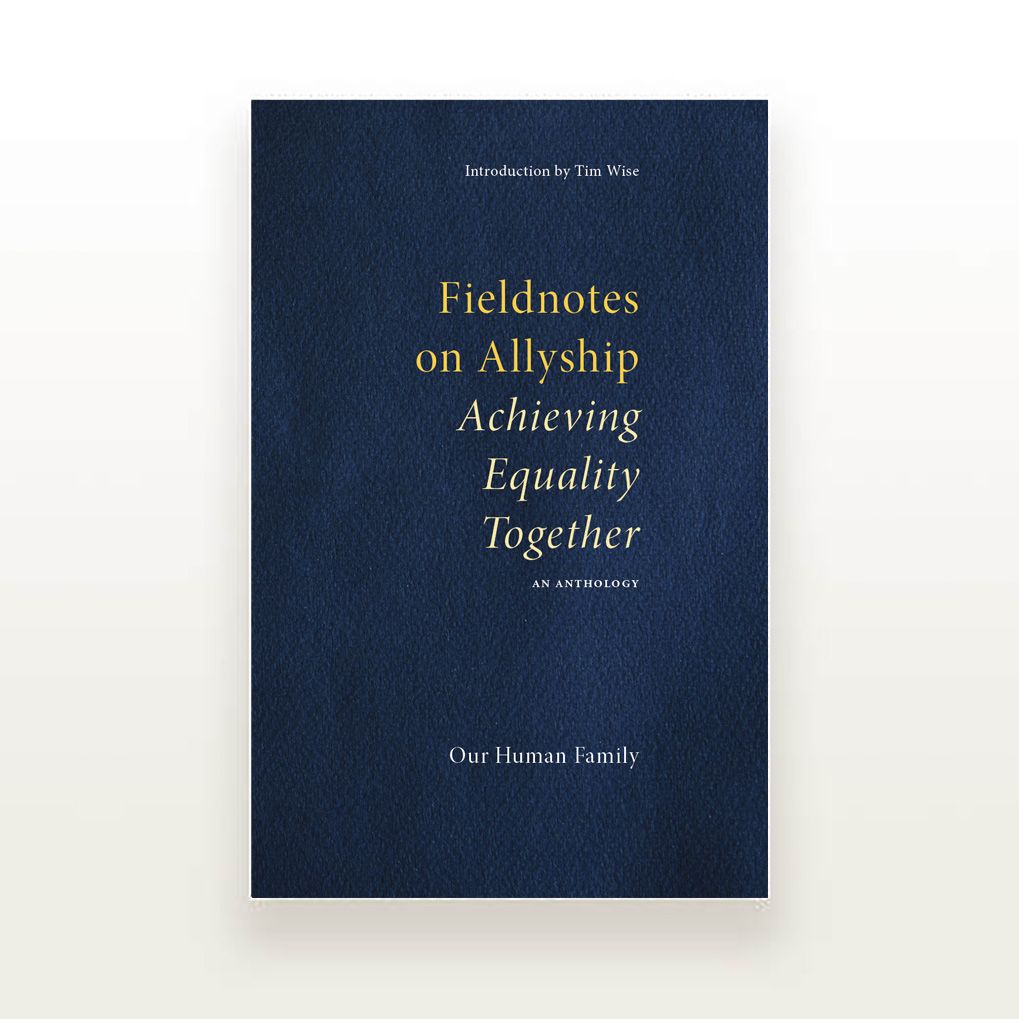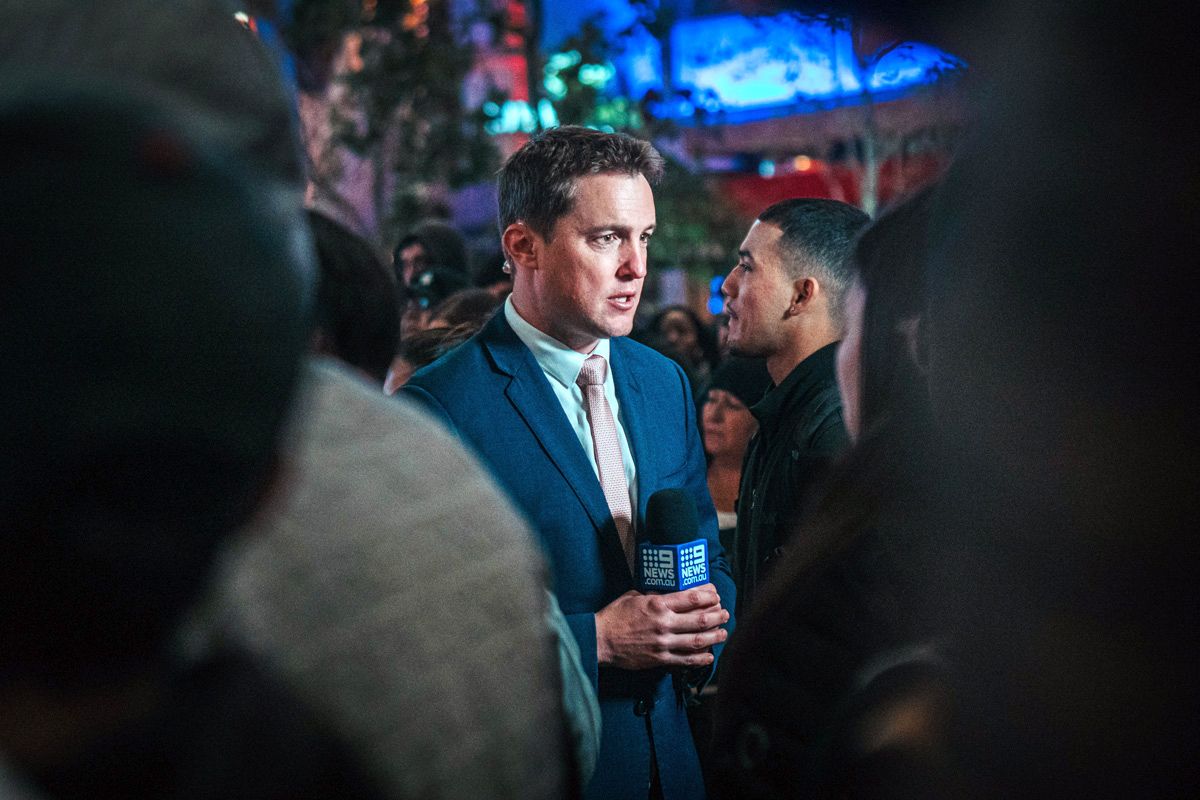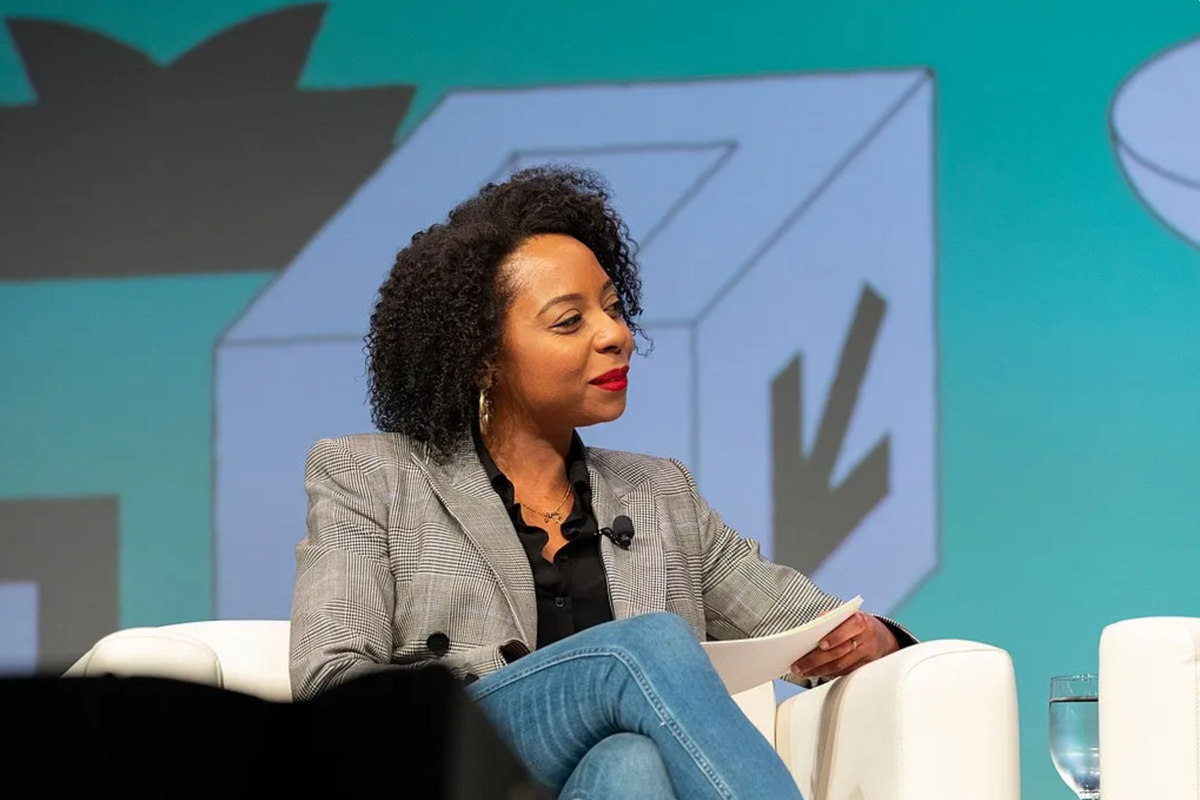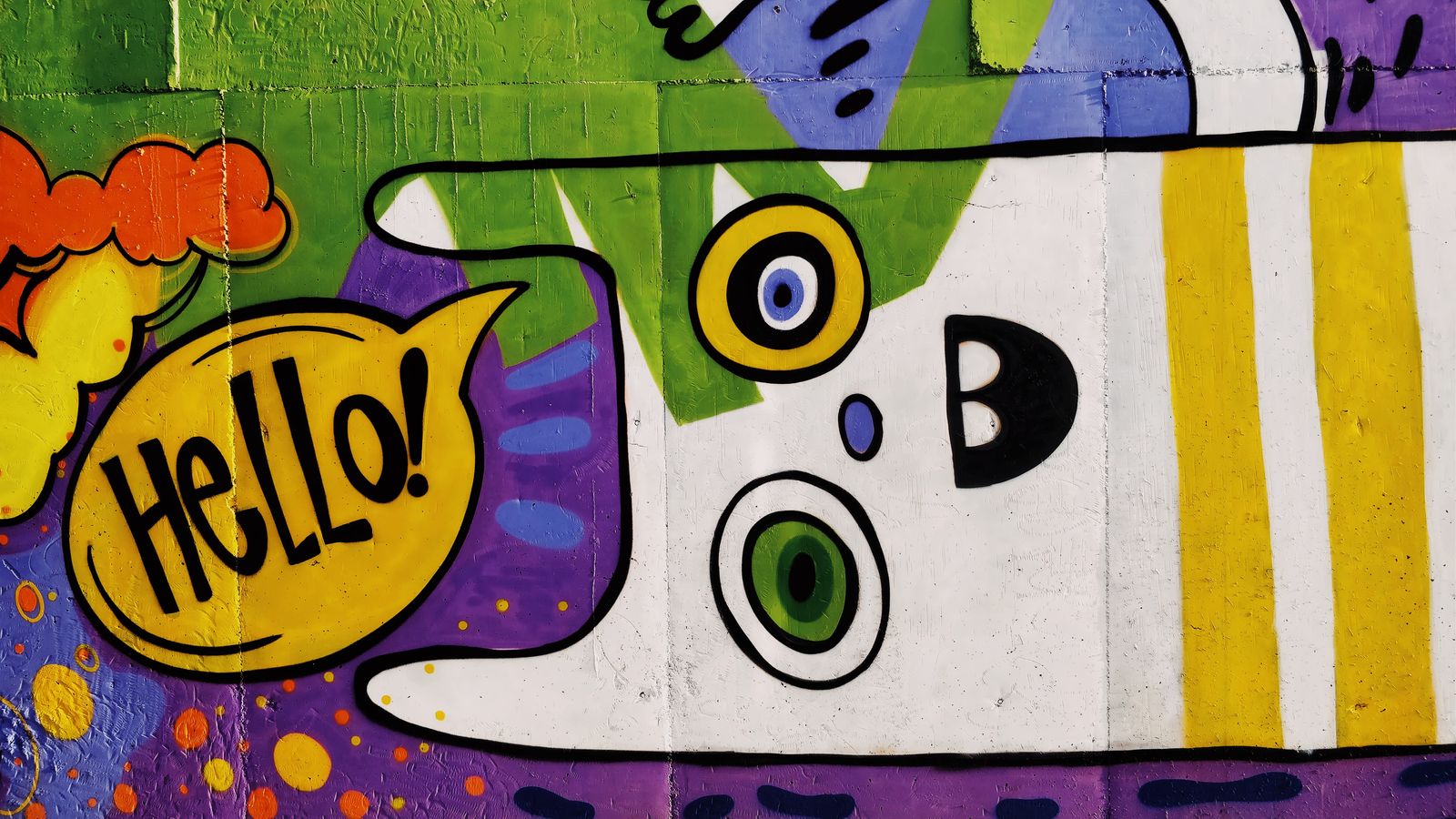|
OHF Weekly, Vol. 5 No. 12: Editor’s Letter, “Bethany Mandel, Wokeness, Intellectual Dishonesty...,” “When Five Black Officers Beat a Black Man to Death,” “Fieldnotes on Allyship,” and a quote by Richard Wright
Editor’s Letter💛 Hey Reader, There are two schools of thought about what a media story might represent: common or uncommon occurrences. As a general rule, they are anomalies, hence they make the news. When the story involves racism, it becomes more complicated. A case like Breonna Taylor’s is clearly a rarity, isn’t it? Surely most people are good and kind and the officers I know are decent people . . . and yes, I imagine most of the folks thinking this are white people. The other possibility is that each case is merely the tiny tip of a much larger, submerged iceberg the average white person cannot or will not see—which I imagine is how most Black people feel. As it becomes easier to provide visual evidence via cell phones videos, cases like George Floyd’s have opened a lot of eyes. Lacking this kind of proof, however, too many white people fall back to the default with which we’ve been raised: police can be trusted, the Black person was guilty. This undoubtedly includes too many members of the media when they go to report the story. Racial Bias, and What Gets ReportedI read some stories this week that got me thinking about the media. The first was about a young Black woman named Angel Pittman right here in North Carolina, who’d saved up a lot of money and invested in her life’s dream to open a mobile hair salon using reconfigured school buses. She purchased land in Salisbury and moved her buses there, only to encounter racism, threats, and vandalism. The local police were no help in this sundown town, and she was forced to move home to Charlotte. On the plus side, I read about it in yahoo!news, which has national coverage, and her Gofundme has exceeded her goals. On the negative side, she’s had to deal with more vandalism and adversity, as reported in a small local paper; apparently yahoo!news only covered the original story, even though it was several months ago. I have to wonder why they chose to cover it now. Nor was their definition of “sundown town” very accurate. Meantime, I couldn’t find any evidence of my local news covering it (Salisbury is within two hours)—is this because it's so common in North Carolina?—and the police have yet to make an arrest. The second story is much more egregious, about a young Black man named Darius Lester shot by the police in West Virginia, and I only know about it because my friend James Finn messaged me. Jim provided a YouTube link to a civil rights lawyer; the only other reference I could find was a brief mention in the local paper. Here are the facts according to the lawyer (whose case is compelling): - Darius, who has no criminal record, got off work at 4:00 a.m. and returned home to fall asleep on the couch.
- A SWAT team executed what was essentially a no-knock search warrant (sound familiar?) at 5:00 a.m. against his uncle for suspected pornography (he also had no priors); they had no reason to suspect a violent response and did not wear body cameras.
- The police shot Darius while he was sleeping (the lawyer shows the blood stains on the couch and below).
I imagine everyone thought of Breonna Taylor almost immediately while reading the details of Darius’ story.
Here’s what the news story said and didn’t say: - Opening sentence: “West Virginia State Police said troopers shot a man in McDowell County early Friday after he attempted to attack them with a hammer.”
- They initially state that the troopers “responded to a residence”—which is highly misleading—and while they mention the search warrant later there’s nothing about whether they knocked or wore cameras, or why they executed a search warrant wearing body armor, with guns drawn, at five in the morning on someone with no priors.
- The news outlet didn’t provide background on the victim or the suspect, they didn’t talk to the victim or his family for their side of the story, or even bother to note he survived.
In other words, a short, very matter-of-fact story that appears to just state what happened. I imagine everyone thought of Breonna Taylor almost immediately while reading the details of Darius’ story. Given all the coverage about Breonna, one might think her case was unique. But we’ve all read stories like Darius’ a thousand times and seen no reason to question them: “nothing but the facts.” There is a lot of media bashing these days, but it’s important to understand how the media works if we want to change the world. People talk about “the media” as if it’s this monolithic thing, with parts that move in lockstep with each other. In fact, it’s a collection of thousands and thousands of journalists, editors, and photographers—each with their own set of opinions and biases. Among “official” media outlets, there are of course owners and bosses who influence what and how things are reported. As someone who studied communications and has interacted with members of the media over the years, I’ve noticed several trends. On TV, journalists have historically been portrayed as having the highest levels of integrity, chasing the story wherever the truth takes them. When I was younger, their word went unquestioned. When I taught college, I asked my students how they know if something’s “true,” and they said it’s on the news or in a textbook. These days, people tend to believe that “their” news source tells the truth, while all the others lie endlessly. People refer to “the media vs. Fox News,” with one or the other being “the real news” depending on one’s political leanings. Most journalists at reputable news outlets do in fact make every attempt to tell the truth. The vast majority of what one sees on the news is “true” on some level; the devil is in the details, as they say. Because again, journalists are people with their own set of biases, most of which are unconscious. In the case of Darius’ story, for example, we’re talking about a poor, fairly high crime area of West Virginia. The police report probably seemed plausible to the journalist, especially if white. They saw no reason to dig any further. When the news reports about a Black person who’s being sought or arrested, they frequently note the race, whereas whiteness is invisible because we white folks typically don’t think of ourselves by our color and we certainly don’t relate to “a criminal.” Whether this is intentional or not on the journalist’s part, it perpetuates the racist idea that Black people are more likely to be criminals. This implication is supported by the use of Black mugshots, versus, say, all the nice country club-like photos of the rich white lawyer Alex Murdaugh after he gunned down his family. (Go Google him; most of the images still show him smiling in a tuxedo!) There’s been an improvement in these representations as journalists have become more aware of this bias, but there’s still a long way to go. Another trend is the consolidation of media outlets, with local news teams rolling up to a handful of national or even international news companies. This is a troubling trend, as the goal becomes more politically and profit driven, rather than simply focusing on “the news,” and it reduces the odds of hearing that break-out story from an independent outlet / journalist. If one returns to Angel’s story, yahoo!news is a liberal outlet and they have an agenda to prove racism is alive and well in America. They’re not wrong and their story appears to be accurate, but by the same token they didn’t attempt to provide the latest information or describe the true horror of a sundown town. It’s quite possible their goal is to simply support the views of white liberal readers without rocking the boat too much. With so many outlets, so much misinformation, and centuries of bias and blatant racism, it’s easy to be disheartened.
Yet another trend that’s affected the media is the rise of “reality TV,” the internet, and social media. Back in the day, newscasters were more likely to report the news—all the news, the good, the bad, and the boring—in their stiff white shirts and monotones. Who could question the integrity of Walter Cronkite or Dan Rather (or Brian Williams or Matt Lauer…hmm)! This was relatively easy when there were three channels and your local paper. Now they have to compete with Entertainment Tonight, The View, Red Table Talk, The Sean Hannity Show, and Real Time with Bill Maher, not to mention three million movies, cable channels, Facebook, Twitter . . . suffice to say, boring doesn’t cut it anymore. The result is that they might choose to highlight Breonna Taylor, who was an innocent, bubbly young EMT with a heartbroken fiancé, or Darius Lester, who is probably more impoverished, has an uncle who might collect porn, and didn’t actually die, but they sure won’t cover both. How Do We Reach the Truth?With so many outlets, so much misinformation, and centuries of bias and blatant racism, it’s easy to be disheartened. How does one get to the truth of anything?
- Start by picking and choosing your sources wisely. No news outlet is perfect, but which one tells the truth the most—using facts and statistics you can verify to the greatest possible extent? (Chicago is known for crime across all media, but when you compare the crime rate to the population size you discover it’s not even in the worst 20 cities in the U.S.; and yes, this bias is also racially driven.) Which outlet has the greatest diversity on their team? Which one prints clarifications and retractions, i.e., is interested in trying to get it right? Which one shows letters to the editor for more diverse viewpoints? Try to pinpoint journalists who might be more accessible and open to listening. Then contact them!
- Learn to question and think critically about every source (Black folks of a necessity are better at this . . . get their opinion). It doesn’t matter if a reporter has integrity, they still have blind spots and biases. And don’t just question what they say and show, question what they don’t, as with Darius’ story above. Chances are, they’ve reported the facts correctly, now Google other sources to find the missing pieces and biases.
- And don’t forget all those “unofficial” outlets! The blessing and the curse of the internet is we can all be reporters now. Publish on Medium or similar sites; comment on social media. Joel Leon started on Medium (and yes, on Our Human Family!), grew his social following, and has now published in The New York Times, Newsweek, Ebony, and more. While most people aren’t quite as successful, almost everyone who writes the truth as they know it finds an audience. Here at OHF Weekly, we’re happy to publish stories that celebrate the diversity of humanity and support equity across all demographics.
One Last StoryI read an article recently on Medium about a teacher whose young Black students wanted her to talk about more positive Black stories on occasion (apologies but I’ve lost the source). Another bias of the media is toward the most heartbreaking, negative stories, across all races but particularly Black, Indigenous, and People of Color. Yes, we need to keep highlighting racism, inequities, and so on. But so too we need to demonstrate the beauty of people across the spectrum. So with that said, I’d like to leave you with one more example of news that should have (could still!) go viral. Corion Evans is a sixteen-year-old Black male high school student in Mississippi—perhaps not so different from Darius Lester—who saw a carful of young women accidentally drive down a boat ramp in the dark and start to submerge. Without a pause, he ripped off his shirt and shoes and dove in to rescue them. A police officer responded to the scene and also attempted to help but got pulled under when one of the girls flailed and took in water, so Corion rescued him too. Yes, you heard that right: Coron, a young Black male down in Mississippi, rescued the white policeman without a moment’s hesitation—because that’s what good people do. Love one another. Sherry Kappel
OHF Weekly Managing Editor
NEW THIS WEEKBy Elwood Watson, PhD By now, many of you who are “woke” enough to follow current issues that populate or dominate the news cycle are aware of the incident involving Bethany Mandel. The conservative activist and author set the internet ablaze and went viral for her screeching response to defining “woke” during the March 14th edition of The Hill’s web series “Rising” to promote her new book Stolen Youth. The reason was that Mandel had difficulty responding to a question from co-host Briahna Joy Gray, in a clip (below) that amassed millions of hits online and ample amounts of gleeful commentary from progressive journalists and activists.
Briahna Joy Gray interviews Bethany Mandel re “wokeness” on The Hill TV | YouTube After her fiasco, the right-wing media personality stated to Fox News Digital that her questioner made a disparaging remark about parents on a hot mic before the interview began, effectively throwing her off her game: “Just before we went on air, Briahna Joy Gray was on a hot mic. I heard her demeaning parenting in general in colorful and nasty terms, stating parents only have kids in order to perpetuate their own narcissism. Robby responded, “There are some good ones and some bad ones.” And so I logged on thinking, ‘This woman is about to come at me very personally, and I have to be really careful because one day my kids are going to see this, and I don’t want them to be hurt by whatever she says and whatever I say,’” she said. “And so I have to be very careful, and so I was already very anxious when the call started, and you can tell, my goodness, if you watch the whole video, I am anxious from the get-go.”
As can be imagined, her suspiciously defensive response drew more than a few eye rolls, side eyes as well as the ire of more than a few social media observers, including some on the right. While there were a number of conservative bloggers who tied themselves up into twisted pretzel knots engaging in all sorts of mental gymnastics to indefensibly defend one of their own, there were other conservatives who were willing to see the forest for the trees and took Mandel to task. Like their left wing counterparts, they knew it was time to give Ms. Mandel her “Bye Felicia” papers. Read the full article at OHF Weekly.
By Charles Estacious White When we hear in the news that a Black person was beaten or killed by the police, we usually assume it was a white officer. However, that’s not always the situation. There was a Black officer charged in the killing of George Floyd in 2020, Alex Kueng. What’s ironic is that he pledged to fix the police. He believed he was in the best position to make significant changes. However, it seemed he had become part of the problem. On his third complete shift, he assisted in the brutal oppression of another Black man. He watched as a white officer slowly suffocated a human being to death. His own family called for his arrest. Is the culture of brutality against Black bodies so pervasive that it led a Black rookie cop to forget his high moral ground? I would say it must be. Three of the police officers accused of killing Freddie Grey were African American. Mr. Grey’s neck was broken, and his voice box was crushed.Several witnesses attested to him being removed from the van and tased several times. The young man can be heard screaming, “I can’t breathe.” “I can’t breathe” is the mantra of police brutality against Black bodies. Yet, as we know, all six of those officers, including the Black ones, were not convicted of any crimes. It’s easy to imagine a white cop beating or shooting a Black person to death because unfortunately, throughout this nation’s history, white supremacy over Black lives has murdered many African Americans. According to the American Medical Association, between 2016 and 2018, 74,000 more African Americans died from inequality. Black people are twice as likely to be killed by the police than white people. The police shot and killed 1,055 people in 2021, according to the data collected by The Washington Post. Black people accounted for twenty-seven percent of those shootings but are only thirteen percent of the population. The police have a problem shooting African Americans. It’s been this way for years. It’s a war, and melanated bodies are the casualties. We must teach our children differently when it comes to police interaction. A sudden movement can be life and death . . . Read the full article at OHF Weekly.
 Our Human Family’s anthology, Fieldnotes on Allyship: Achieving Equality Together.” Available everywhere. The BookFieldnotes on Allyship: Achieving Equality Together is an informal and informative guide to becoming an effective ally and covers four areas: 1) how we as a nation got here, 2) identifying the forces that maintain systemic racism, 3) preparing to be an ally, and 4) serving as an ally. The DetailsThis original anthology written by eighteen authors from the United States and around the world. They include anti-racism activists, authors, anthropologists, artists, a Masters Athlete, college professors, retired Navy, a lawyer, mothers, fathers, daughters, sons, sisters, and brothers, all of various ethnicities. Fieldnotes on Allyship is the first collaborative effort of your friends at OHF. The writers include: Want to Read an Excerpt?No problem! We can do that—enjoy! Excerpt from Fieldnotes on Allyship: Achieving Equality Together. AvailabilityFieldnotes on Allyship: Achieving Equality Together is available in print at Amazon for $14.99. The digital versions for Kindle-ereaders and iPad/iPhone and Nook devices can be found at ourhumanfamily.org for $7.99; that’s 20% less than anywhere else on the internet. We hope you enjoy this labor of love for humanity as much as we had producing it. Fieldnotes on Allyship: Achieving Equality Together, available in print, and for iPad, Nook, and Kindle. Digital editions available in Australia, Canada, France, Germany, Italy, Japan, Mexico, and the United Kingdom.
Member Discussion: Chat with UsHave you tried our new inline chat module? We’ve recently added a much simpler way to interact with our editorial team and writers. At the end of each newsletter and individual article you’ll find a “Member Discussion” header. If you’re a subscriber, simply sign in to your account and you’re good to start or join the conversation. It’s that easy. See you in the comments!
Final Thoughts
|







